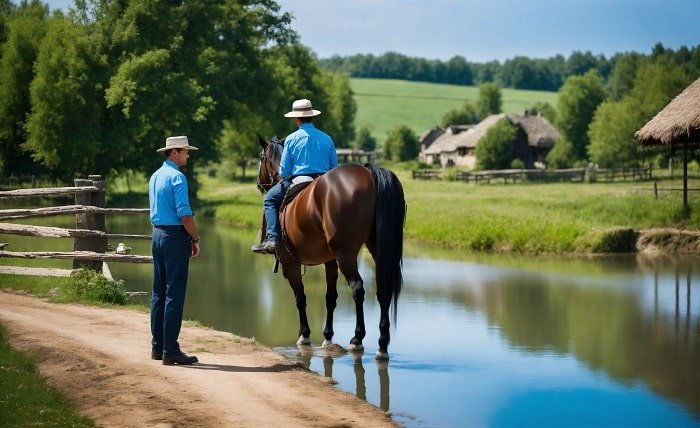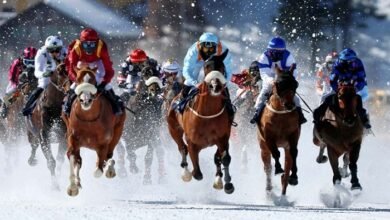Ultimate Guide to Being an Observateur du Turf

Introduction
The world of horse racing is a thrilling blend of speed, strategy, and sheer unpredictability. For enthusiasts, becoming an “observateur du turf” is more than just a hobby—it’s a way of life. This term, translating to “turf observer” in English, refers to someone who meticulously studies horse racing, analyzing various factors to predict outcomes. Whether you’re a novice looking to dip your toes into the exciting world of horse racing or a seasoned bettor aiming to sharpen your skills, this guide will walk you through everything you need to know about being an observateur du turf.
What is an Observateur du Turf?
An “observateur du turf” is someone who dedicates time and effort to studying horse races. This role involves analyzing various aspects such as horse performance, jockey skills, track conditions, and historical data to make informed predictions about race outcomes. Unlike casual bettors, a turf observer relies heavily on detailed analysis and strategic thinking.
The History of Turf Observation
The practice of observing horse races dates back centuries, with its roots in ancient civilizations where horse racing was a popular sport. Over time, the methods and tools used by turf observers have evolved, from simple observations to sophisticated data analysis. Understanding this history provides a foundation for modern turf observation techniques.
Essential Skills for Turf Observers
Being a successful turf observer requires a unique set of skills:
- Analytical Thinking: The ability to analyze data and identify patterns.
- Attention to Detail: Noticing subtle changes in horse behavior or track conditions.
- Patience: The ability to wait for the right moment to place a bet.
- Decision-Making: Making quick, informed decisions based on available data.
Horse Racing Terminology
To effectively observe and analyze horse races, it’s crucial to understand the terminology used in the sport. Here are some key terms:
- Furlong: A unit of distance in horse racing, equal to 1/8 of a mile.
- Handicap: A race in which horses carry different weights to level the playing field.
- Paddock: The area where horses are saddled and paraded before a race.
- Post Position: The starting position of a horse in the starting gate.
Key Factors to Analyze in Horse Racing
Several factors can influence the outcome of a horse race. As an observateur du turf, you’ll need to consider:
- Horse Form: The recent performance history of a horse.
- Jockey Performance: The skill and track record of the jockey riding the horse.
- Track Conditions: Weather and track surface conditions on race day.
- Odds: The betting odds, which reflect public and expert opinion on the race.
Tools and Resources for Turf Observers
Modern technology has made it easier than ever to access the information needed for turf observation. Key tools and resources include:
- Racing Forms: Detailed publications that provide information on horses, jockeys, and past performances.
- Online Databases: Websites that offer comprehensive data on horse racing statistics.
- Mobile Apps: Apps that provide real-time updates on races, odds, and results.
- Expert Analysis: Access to expert opinions and analysis can provide valuable insights.
Betting Strategies for Turf Observers
Betting on horse races requires more than just luck. Here are some strategies that turf observers use:
- Form-Based Betting: Placing bets based on the recent form of the horse.
- Value Betting: Looking for odds that offer good value compared to the perceived chance of winning.
- Multiple Bets: Placing several different types of bets on the same race to spread risk.
- Bankroll Management: Managing your betting budget to avoid significant losses.
Common Mistakes to Avoid
Even experienced turf observers can make mistakes. Here are some common pitfalls to avoid:
- Overconfidence: Believing that you can predict race outcomes with certainty.
- Ignoring External Factors: Failing to consider weather, track conditions, and other external factors.
- Chasing Losses: Increasing bet sizes to recover from losses, which can lead to bigger losses.
- Neglecting Research: Not conducting thorough research before placing bets.
The Role of Technology in Turf Observation
Technology has transformed the way turf observers analyze races. Innovations such as:
- Big Data Analytics: Using large datasets to identify patterns and trends.
- Artificial Intelligence: AI tools that provide predictive analysis and betting recommendations.
- Live Streaming: Watching races in real-time to make immediate observations.
- Social Media: Engaging with the horse racing community for tips and insights.
Future Trends in Horse Racing Observation
The future of turf observation looks promising, with several trends emerging:
- Enhanced Data Analytics: Improved algorithms for more accurate predictions.
- Virtual Reality: VR experiences for immersive race analysis.
- Wearable Technology: Devices that monitor horse health and performance metrics.
- Blockchain Betting: Secure and transparent betting platforms using blockchain technology.
Case Studies: Success Stories of Turf Observers
Learning from successful turf observers can provide valuable insights. Here are a few notable examples:
- Case Study 1: John Smith, who turned a small bankroll into a fortune using data-driven strategies.
- Case Study 2: Jane Doe, who leveraged technology to gain an edge in horse race betting.
- Case Study 3: Robert Brown, who combined traditional observation techniques with modern analytics for consistent wins.
Conclusion
Being an observateur du turf is both an art and a science. It requires a keen eye, analytical mind, and a passion for horse racing. By understanding the key factors, using the right tools, and learning from the experts, you can enhance your skills and enjoy the thrilling world of horse racing to its fullest.
FAQs
1. What is the main role of an observateur du turf? The primary role is to analyze horse races and predict outcomes based on various factors like horse form, jockey performance, and track conditions.
2. Can anyone become a successful turf observer? Yes, with dedication, patience, and the right knowledge, anyone can become a successful turf observer.
3. What tools are essential for turf observation? Essential tools include racing forms, online databases, mobile apps, and expert analysis.
4. How important is technology in modern turf observation? Technology plays a crucial role by providing data analytics, AI predictions, live streaming, and social media insights.
5. What common mistakes should turf observers avoid? Common mistakes include overconfidence, ignoring external factors, chasing losses, and neglecting thorough research.





